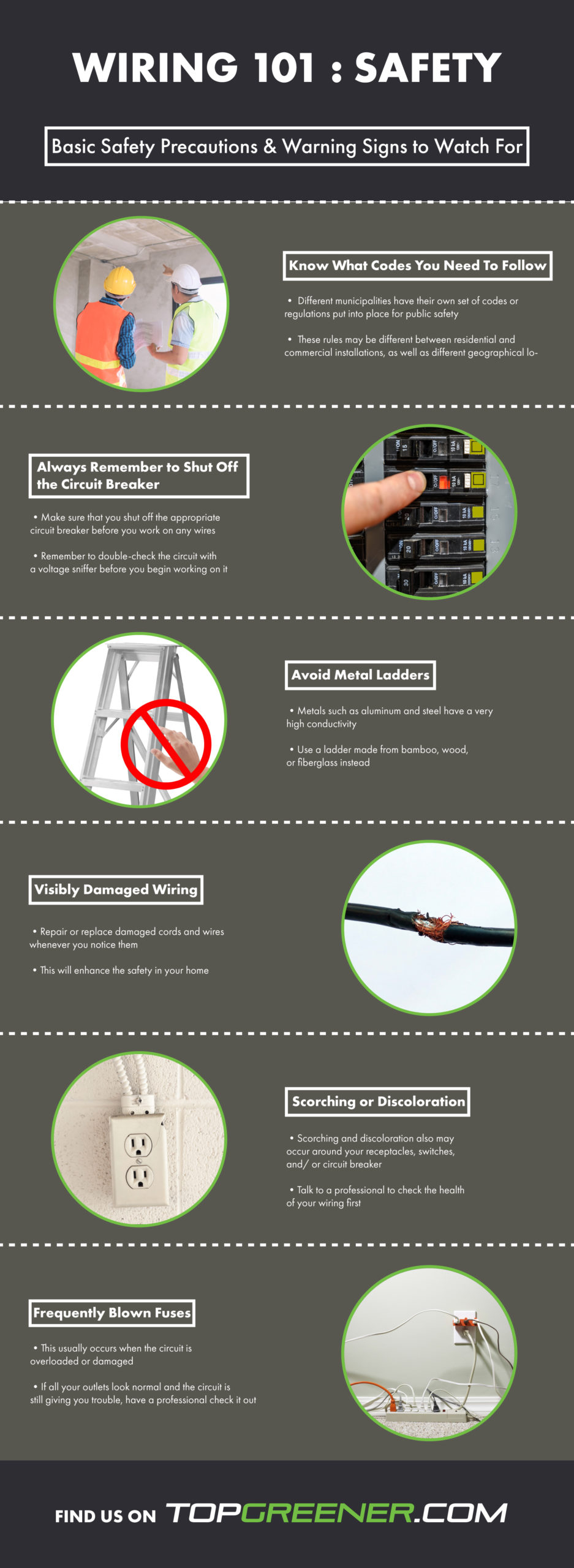Whether you need a quick fix or a total system upgrade, one thing is for sure: hiring a professional electrician can be expensive. And while it feels good to save money and take control into your own hands, working on electrical wiring is an extremely dangerous job. Tiny mistakes can have serious, often deadly, consequences. That isn’t to say that you can’t take the DIY route–just that you should do plenty of research before you do. Being able to work on home wiring yourself is an excellent skill to have under your toolbelt. Just remember it is one that requires a heightened level of awareness and some vital safety knowledge.
Here to Help
Welcome to Wiring 101, where we are taking it back to basics to help equip you with the proper knowledge to better understand and work with your home’s electrical wiring. Last time we talked about the three basic components of residential wiring. In this installment, we will go over some basic safety precautions to follow when working on home wiring, plus important warning signs.
Basic Safety Precautions
- Know what codes you need to follow. Different municipalities have their own sets of codes and regulations put into place for public safety. These rules may be different between residential and commercial wiring, as well as different geographic locations. While there are lots of home wiring projects you can take care of yourself, safety codes may require you to hire professional help for more complicated projects.
- Always remember to shut off the circuit breaker. Never work on wires while they’re hot. Make sure that you always shut off the appropriate circuit breaker before you work on any wires. You should also double-check the circuit with a voltage sniffer before you begin working on it. You can never be too careful when it comes to electricity!
- Avoid metal ladders. Metals such as aluminum and steel have very high conductivity. You should always keep them far away from your electrical wiring job. Avoid using ladders made from aluminum or steel. The electric current will see these high conductors as a fast-track to the ground. They will pass right through your body if you so much as touch the metal ladder. For the safety of both you and your wiring system, just never, ever use conductive ladders and tools. Some better options would be bamboo, wood, or fiberglass.
Warning Signs to Watch For
- Visibly Damaged Wiring – It’s a no-brainer that damaged wires may be hazardous to work on. Actually, damaged wires may even prove themselves dangerous for daily use. It is best to repair or replace damaged cords and wires whenever you notice them. This preventative measure will enhance the safety in your home all of the time, not just when you’re doing electrical work.
- Scorching or Discoloration – You may associate scorching and discoloration with damaged wiring. There are other locations that this sort of damage may occur. Be sure to check around your receptacles, switches, and circuit breaker. If anything looks like it’s been heating up, you may want to hold off on the DIY projects. Have a pro take a look at the health of your wiring first.
- Frequently Blown Fuses – Are you finding yourself resetting the same circuit at the breaker over and over? This typically means that the circuit is either being overloaded or it is damaged. Check all of your outlets on the circuit–are too many devices or appliances drawing power simultaneously? If everything looks normal and the circuit is still giving you trouble, you may need to have it assessed by a pro. You should always hold off on any DIY projects until you’re sure the wiring is safe for you to work on.
While you still have a lot to learn before you’re ready to start working on your home’s wiring system, these precautions are important and should never be forgotten. Be sure to check out the next installment of Wiring 101, where we will walk you through basic wire identification.
